�
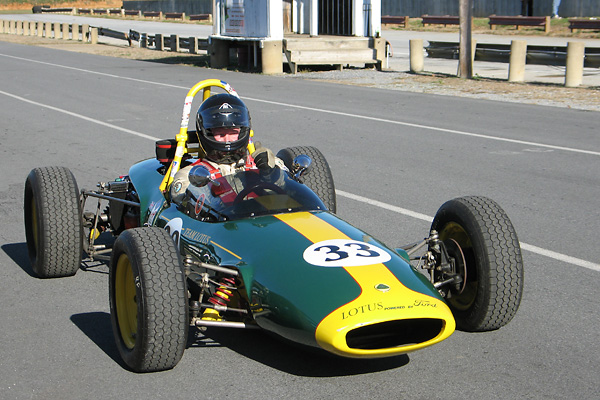
�
Dick Leehr's 1968 Lotus 51c Formula Ford Race Car
� � Owner: Dick Leehr� City: Warwick, NY
� Model: Lotus 51c
� Engine: Ford 1600cc
� Race prepared by: Michael Clifford at Michael's Vintage Racing�
�
The Birth of Formula Ford
��
Formula Ford was originally conceived by Geoff Clarke, manager of the "Motor Racing�
Stables" driver's school at England's Brands Hatch racetrack. The school needed �
appropriate cars for training drivers, and the Formula Three (997cc) cars they'd been �
using for open-wheel training had proven too expensive to maintain and to repair. �
Clarke is credited with conceiving the idea of installing bog standard Ford Cortina �
(1500cc) engines, steel wheels, and street tires onto a Lotus 31 Formula Three chassis. �
The choice of engines was clever: the Cortina engine would cost far less than the �
more highly tuned race engines it replaced, but it would bolt right in and provide �
suitably brisk performance. As the idea was kicked around, it evolved into the concept �
for a new racing class. Ford and Lotus were both quick to buy in, and keen to promote �
the new class.�
�
In 1967 Lotus introduced their model 51. It was the first car built specifically for the �
new Formula Ford class. �
�
Racing isn't interesting without competition. Motor Racing Stables was in direct �
competition with the Jim Russell driving school at the Snetterton racetrack, so it's�
only natural that the two schools worked strategically to produce competition. Jim �
Russell had been running at least five Lotus 31's at his schools, but in the earliest �
days of the new formula Jim Russell worked with rival car constructor: Alexis. Lotus and �
Alexis wouldn't have the field to themselves for very long though: the appealingly �
simple rules of the new class encouraged many constructors to get involved. Formula �
Ford has historically been a starting place for ambitious young car designers and �
constructors as well as drivers. �
�
The very first Formula Ford race was held at Brands Hatch on July 12, 1967. A driver �
named Ray Allen won, driving a Lotus 51. The Formula Ford class soon crossed the Atlantic. �
Records of the very earliest regional races are sketchy, but we can say with confidence �
that the first SCCA "national" Formula Ford race was held on March 23, 1969 at Willow �
Springs, California. A driver named Jules Williams won, driving a Lotus 51.�
�
�
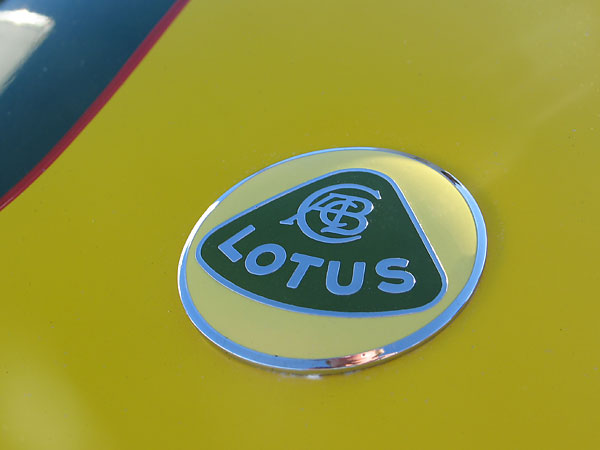
�
Variants of the Lotus 51
��
Marque historians typically recognize four basic variants of the 51 model. They can be�
designated "51", "51a", "51b", and "51c" respectively - but we should warn up front�
that classification is a messy business. It was from the start: Lotus didn't use �
the name "51" until after they'd already modified a number of model 31 cars to suit �
the new Formula Ford class. The car Ray Allen won that first Formula Ford race with �
was actually entered as a 31, but Lotus retroactively designated it a 51! For the purposes �
of designation, any frame that was welded up as a 31 and then built into a Formula Ford �
is called a 51 (without letter suffix). �
�
The 51a model designation indicates an early car with a frame that was built to be a �
Formula Ford. Specific differences between 51 frames and 51a frames are trivial: for example�
the earliest Formula Ford's came standard with wet oil sumps, so Lotus omitted welded-on �
oil reservoir brackets from the 51a frames. However, some customers special-ordered dry �
sump systems. Like the Lotus 31, the 51a rear suspension upper trailing links were �
mounted at approximately the height of the halfshafts. To save money, rear suspension �
links weren't equipped with Heim joints. The 51a model was built through 1967 (and well �
into 1968.) �
�
�
Enjoying this article? www.BritishRaceCar.com is partially funded through generous support from readers like you!
�
To contribute to our operating budget, please click here and follow the instructions.
�
(Suggested contribution is twenty bucks per year. Feel free to give more!)�
�
The 51b model designation generally corresponds to 1968 production. The feature that most �
clearly differentiates a 51b from a 51a is improved rear suspension geometry - with upper �
trailing links mounted to the top of the upright - plus the rear suspension is more easily �
adjustable due to use of Heim-jointed radius rods. The Renault transaxle was still de rigueur. �
�
Sometime around the beginning of 1969, Lotus introduced their new model 61 which featured �
a beefed up frame, a different body shape, and a Hewland transaxle. The 51c model was a �
"transition model" that shares the body of the 51 along with many of the upgraded features �
of the 61. For most people, the defining characteristic of the 51c is its factory-installed �
Hewland transaxle. (The specific model of transaxle fitted seems to have varied from car �
to car. Some got the Mark 6 and some got the Mark 8.) As a general rule, 51c was a 1969 �
model although some were apparently built in 1968. Almost all the 51c's were exported to �
North America. �
�
North American (SCCA) Formula Ford rules differed in a number of areas from their �
British counterparts. For example, from the beginning of Formula Ford in America, �
the 1600cc crossflow version of the Ford Cortina engine was specified instead of the �
1500cc non-crossflow. Tire requirements have also varied significantly. The four basic �
model variants described here could be divided further to account for these sorts of �
variables. �
�
�
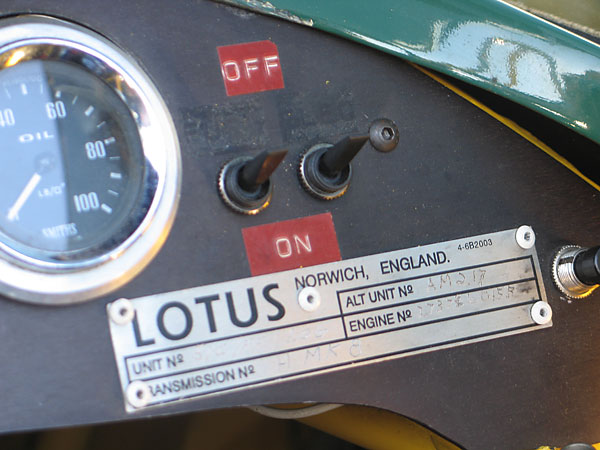
�
LOTUS, Norwich, England
�
ALT UNIT No. "AM217", UNIT No. "51C/FF/206", ENGINE No. "273796015R"(?), TRANSMISSION No. "H.MK8"
�
 �
�
�
�
Dick Leehr's Lotus 51c
�| Car Ownership History: | |||
| Pre- 1985 | Dick Beuter | Golden CO | |
| 1986-1992 | Carl "Tom" Anderson | San Clemente CA | |
| 1992-2000 | Tom Rodberg | Irvine CA | |
| 2000-2010 | Dick Leehr | Grosse Pointe Woods, MI / Warwick, NY | |
| Significant Participation Events: | |||
| July 17, 1988 | Last Race at Riverside CA | ||
| August 3, 2001 | Meadowbrook Historic Races | (won Judges Choice Award) | |
| October 13-14, 2001 | Ford Racing Centennial | Dearborn MI | |
| 2001-2005 | Brian Redman Intl. Challenges | Road America | |
| July 27-29, 2007 | Vanderbilt Concours | Newport RI | |
| August 17-19, 2007 | Monoposto 20th Aniversary | Grattan, MI | |
Features and Specifications
�| Engine: | �Ford Cortina 1600cc crossflow, built by Ivey Engine Inc. (~110hp). �
�
Weber 32/36 DGV carburetor. ITG air filter.�
Bosch distributor. Bosch ignition coil. �
Dry sump lubrication system with rear mounted reservoir and oil cooler.�
Dave Bean Engineering oil pump. | �
| Cooling: | �cross flow radiator. (Coolant flows through chassis tubes.) | �
| Exhaust: | �four into one header. | �
| Transaxle: | �Hewland Mark 8 4-speed, with limited slip differential.�
Metalastic rubber "doughnuts" on the halfshafts. | �
| Front Susp.: | �unequal length wide-based wishbones. �
Armstrong Adjustable shocks/Front spacers. Eibach springs.�
Triumph (Alford & Alder, forged) uprights. �
Triumph steering rack.�
Adjustable 5/8" anti-sway bar. | �
| Rear Susp.: | �inverted lower wishbones, single top links, and twin radius arms.�
Armstrong adjustable shock absorbers. Eibach springs.�
Lotus magnesium uprights.�
Adjustable 5/8" anti-roll bar. | �
| Brakes: | �(master) dual Girling master cylinders with adjustable bias bar. � (front) Girling 14LF calipers and 9.25" solid rotors. � (rear) Girling 14LF calipers and 9.75" solid rotors. | �
| Wheels/Tires: | �Diamond Racing Wheels 13x5.5 steel wheels. (These are the spun-rim version,�
and they weigh about 10.5#/ea. A set of Panasport aluminum wheels are kept as�
spares.) Dunlop Racing CR82 tires (135x545x13 front / 165x580x13 rear). | �
| Electrical: | �Tilton XLT gear reduction starter motor. Die Hard battery. | �
| Instruments: | �(left to right) Smiths dual oil pressure (0-100psi) and water temp (30-110C) gauge,�
Smiths tachometer (500-9000rpm),�
Smiths oil pressure (0-100psi). � (Note: the oil pressure part of the dual gauge is disconnected.) | �
| Fuel System: | �new 3.5 gallon fuel cell (mounted behind driver's seat). | �
| Safety Eqpmt: | �reinforced roll hoop. Simpson six point, camlock safety harness. �
Quick release steering wheel hub.�
FireBottle 2.5lb Halon centralized fire suppression system. | �
| Weight: | �890 lbs. | �
| Racing Class: | �Formula Ford. | �
Engine Installation
��
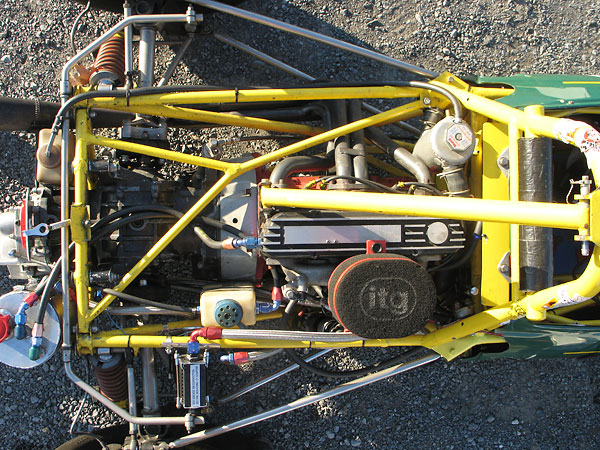
�
Ford Cortina 1600cc crossflow, built by Ivey Engine Inc. (~110hp).
�
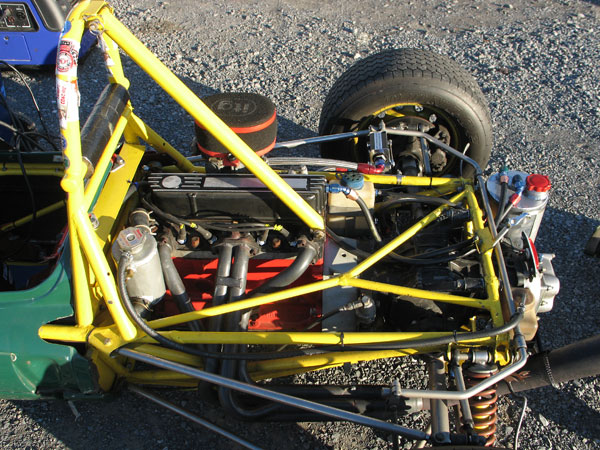
�
The "Y-brace" over the engine bay is easily removeable for engine or transaxle access.
�
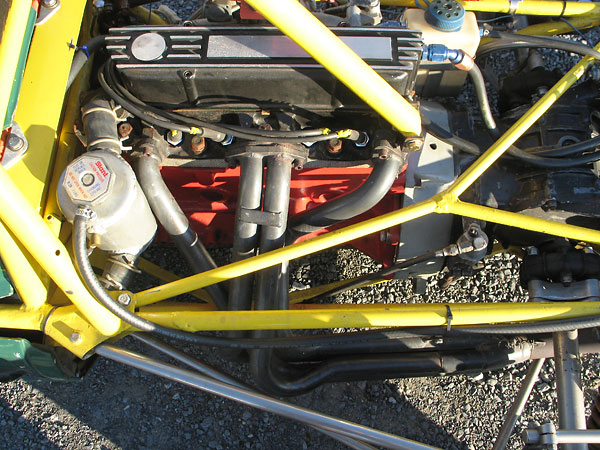
�
Four into one exhaust header.
�
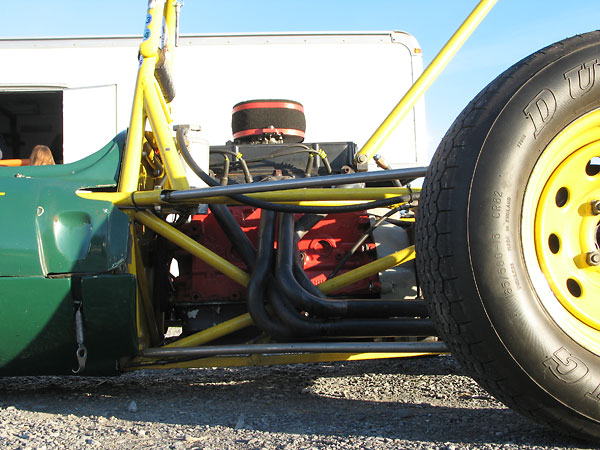
�
The Lotus 51 came standard with a 4-2-1 ("tri-Y") header, but most have been updated.
�
The conventional wisdom is that a four-into-one makes more peak horsepower, although
�
a tri-Y may possibly produce more torque, particularly at less-than top engine speed.
�
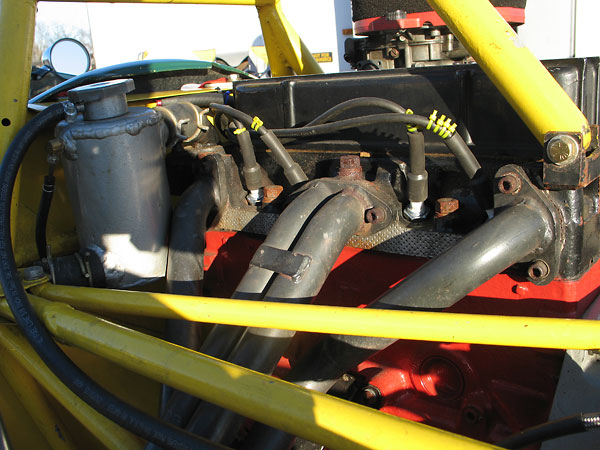
�
You can see one of the coolant hose attachments to the frame here. Lotus ran coolant through the top
�
LH & bottom RH tubes, and oil through bottom LH & top RH tubes. Just the thing for wintertime racing!
�
The reason for plumbing through chassis tubes was to save weight. No racecar marque is more closely
�
associated with lightweight design, or frankly more criticized for putting lightness before safety and
�
durability. For these reasons, some of the top drivers of the 60's and 70's flatly refused to drive for Lotus.
�
Even Lotus' Formula One team drivers Graham Hill and Jocken Rindt baulked at various times.
�
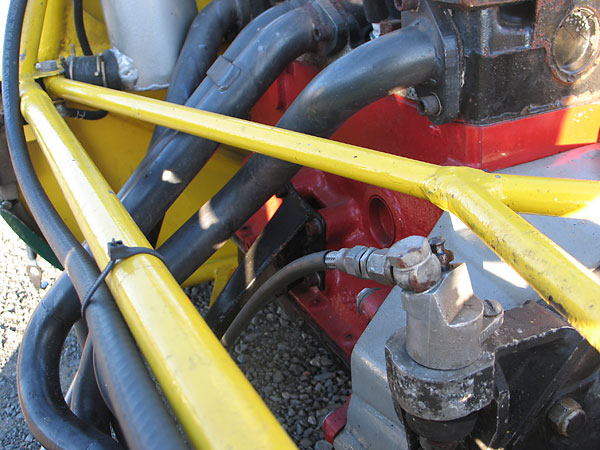
�
Racers don't normally use antifreeze because it's slick if spilled on the track. However, before storing
�
a Lotus 51 it's a very good idea to add corrosion inhibiting antifreeze or to drain the system.
�
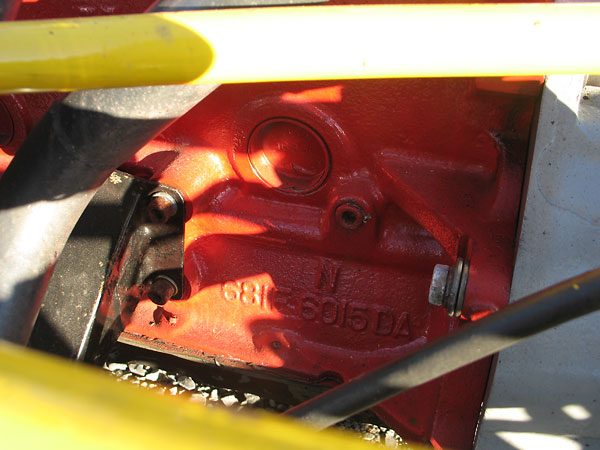
�
681F6015DA - The casting number indicates this is a tall deck crossflow 1600cc engine block.
�
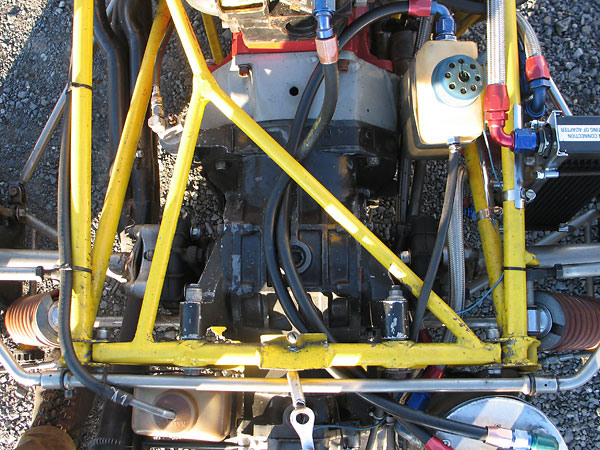
�
Hewland transaxles are the feature that defined the 51c versus earlier models with Renault transaxles.
�
There was actually a lot of overlap, with Hewland transaxles available at a premium price long before
�
Renault boxes were discontinued. A large proportion of early 51's have been upgraded with Hewlands.
�
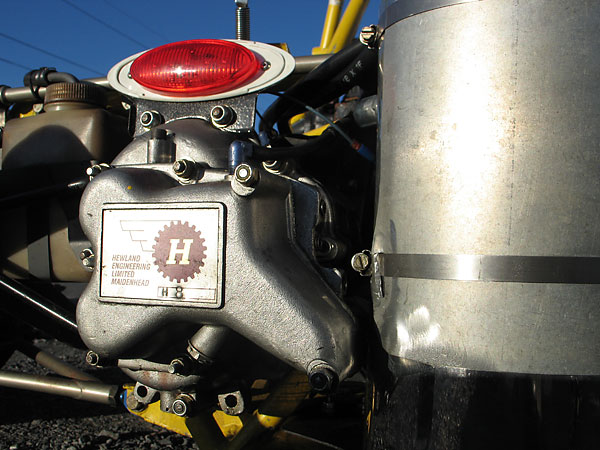
�
Lotus installed Mark 6 and Mark 8 Hewlands. This particular car was originally built with a Mark 8.
�
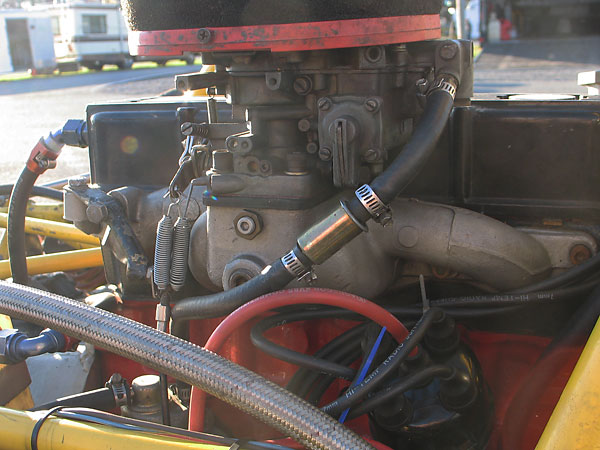
�
Weber 32/36 DGV carburetor. The distributor is on one side of the engine, the spark plugs are...
�
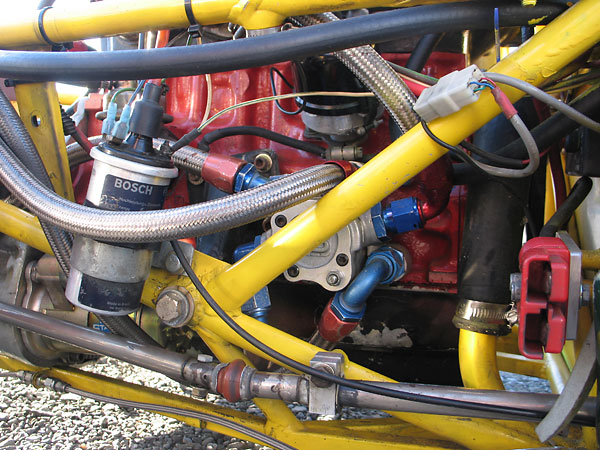
�
Tilton XLT gear reduction starter motor. Bosch ignition coil.
�
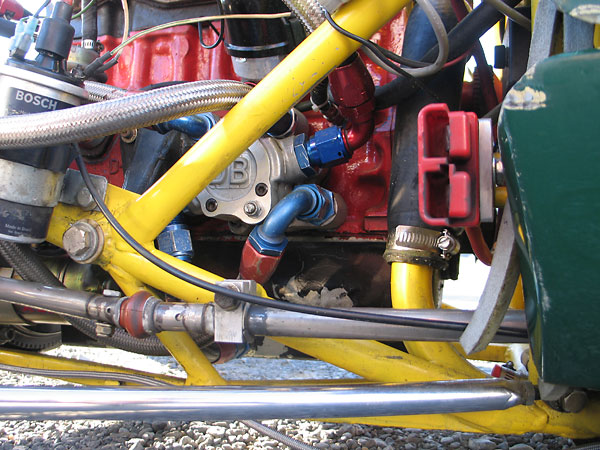
�
Dave Bean Engineering oil pump.
�
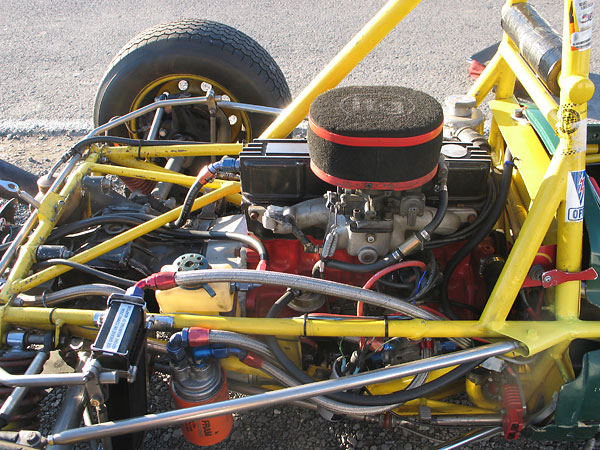
�
Originally, the oil cooler was mounted at the front of the car and oil was routed to it
�
through frame tubes. The rear mounted oil cooler shown here is a fairly recent replacement.
�
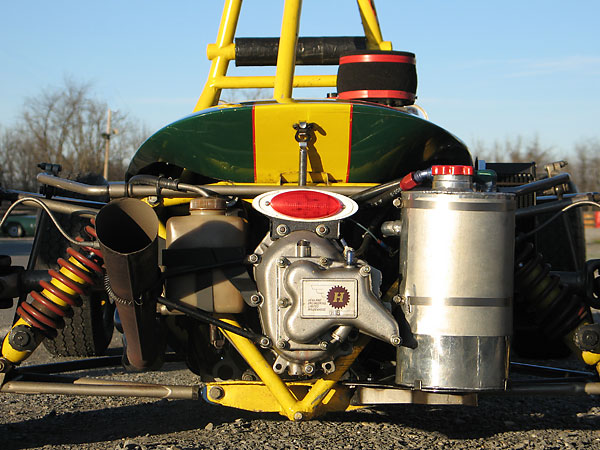
�
Oil reservoir for the dry sump lubrication system.
�
Front Suspension
��
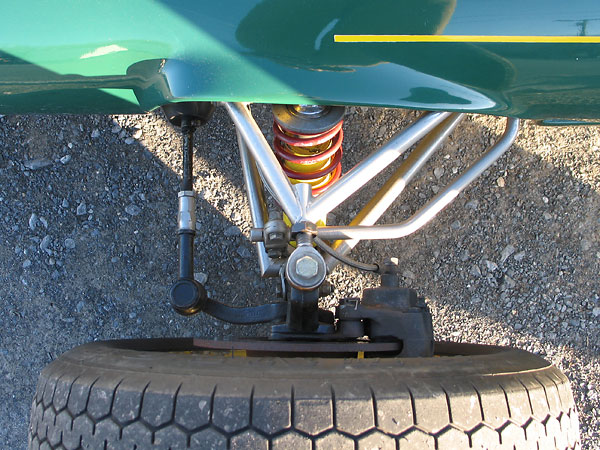
�
Original Lotus 51's came with rather soft suspension springs (front: ~100#/in, rear: ~175#/in).
�
�
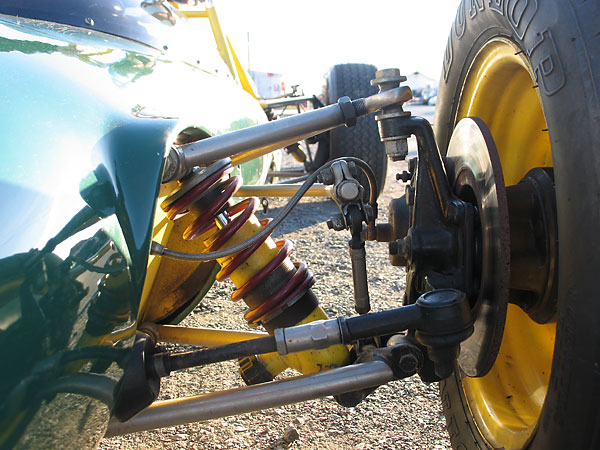
�
Non-adjustable Armstrong shock absorbers were standard equipment, but Armstrong's adjustable version
�
(shown here) was popular with Formula Ford racers. Lotus may have installed them to suit a special
�
order. They're no longer made, and they can be quite expensive to replace or to have rebuilt.
�
�
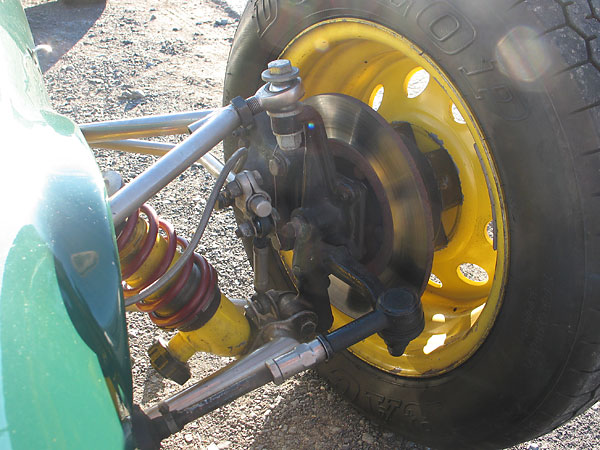
�
Triumph (Alford & Alder) forged uprights have been used on many makes and models of Formula Ford.
�
�
Frame and Rear Suspension
��
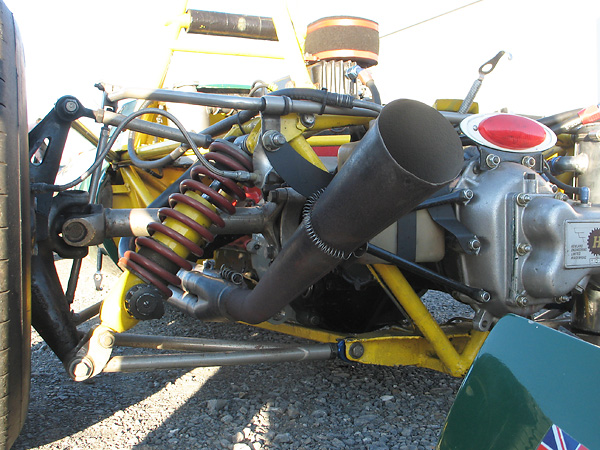
�
Lotus subcontracted fabrication of frames to a company called Arch Motors, who stamped their own serial
�
number on each frame. The "AM" number is different from the Lotus serial number, but just as useful for
�
identifying a specific Lotus Formula Ford. On Lotus 51's and 61's, the AM frame number appears on the
�
flat steel plate just behing where you see the anti-sway bar bracket attached in this photo.
�
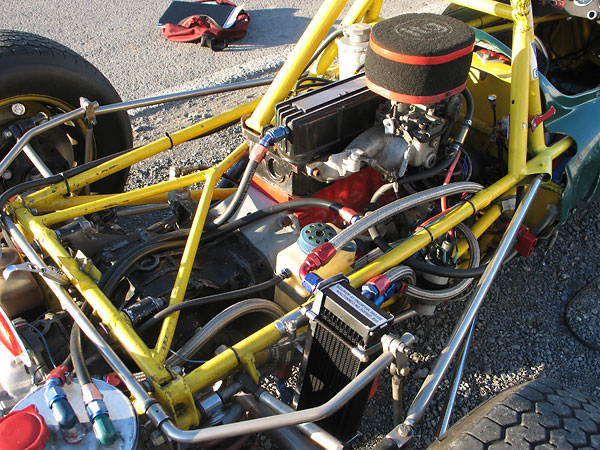
�
Like many racecar builders of their era, Arch Motors brazed frame joints instead of fusion welding them.
�
Nickel-bronze filler rod was flowed into the joints at a temperature well below the melting point of steel.
�
To improve quality and productivity, Arch Motors used a Calor Model W gas-fluxer instead of flux paste.
�
With flux automatically mixed into the oxy-acetylene flame (instead of pre-applied in paste form) they got
�
better wetting, better flow of filler material, and post-braze cleanup effort was dramatically reduced. Calor
�
claimed their brazing rod provided 90,000psi joints. If true, that's stronger than the steel base material.
�
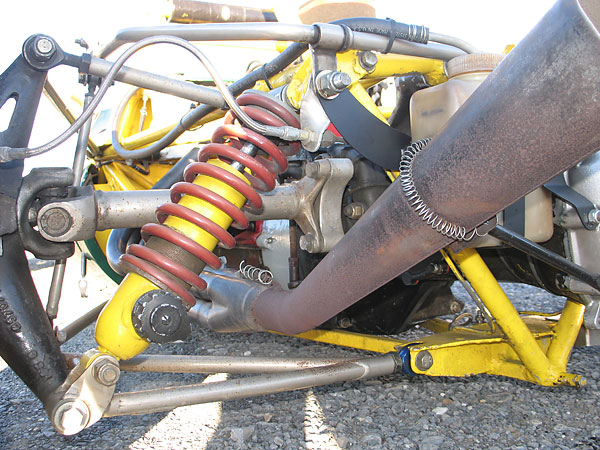
�
See the aluminum spacer between metalastic rubber donut and steel halfshaft? Usually spacers are found
�
there after someone has converted from (wider) Renault transaxle to a (narrower) Hewland transaxle.
�
Since its build record indicates that this car was built with a Hewland, it almost certainly had longer
�
halfshafts (and no spacers) when it originally left the factory. Halfshafts have evidently been replaced.
�
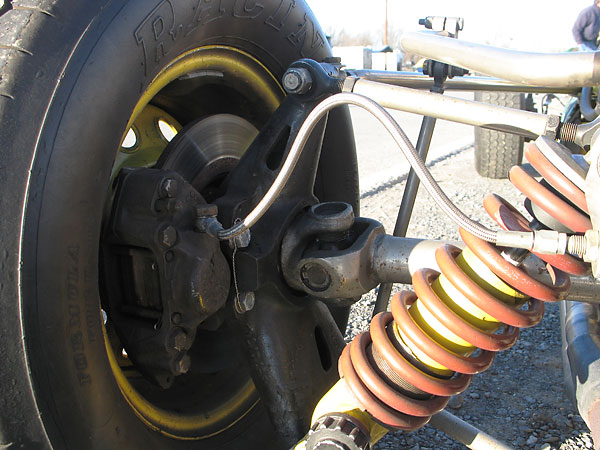
�
Early Lotus 51 magnesium rear uprights were handed, with a bracket for the brake caliper on the rear
�
and a bracket for the upper trailing link on the front. By the time the Lotus 61 came around, the casting
�
instead had two brake caliper brackets, and would work on either side of the the car. The rear top link
�
on the 51c was double Heim-jointed for convenient adjustability, but early 51's had fixed-length top links.
�
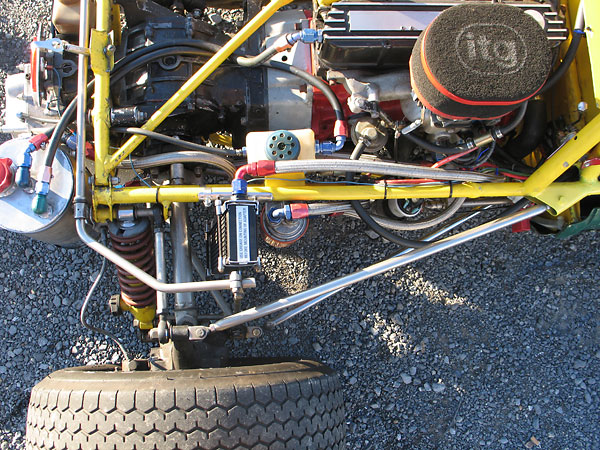
�
Front and rear anti-sway bars are adjustable in the usual way: loosening and sliding their attachment
�
links fore and aft to alter effective lever arm length.
�
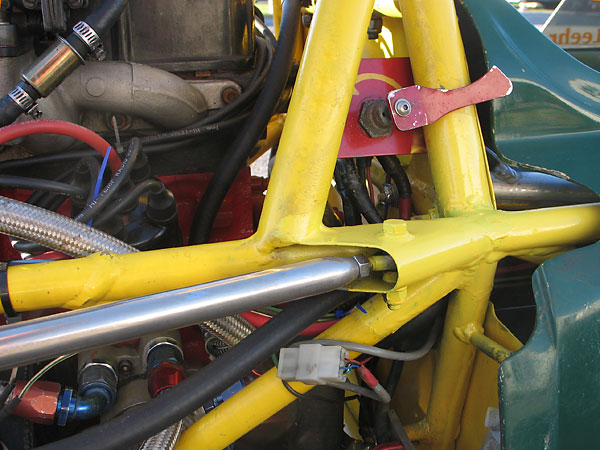
�
Upper trailing links were mounted much lower on the Lotus 51a - basically at halfshaft height.
�
On the 51b and 51c the upper trailing links were moved higher, as shown here.
�
�
Interior
��
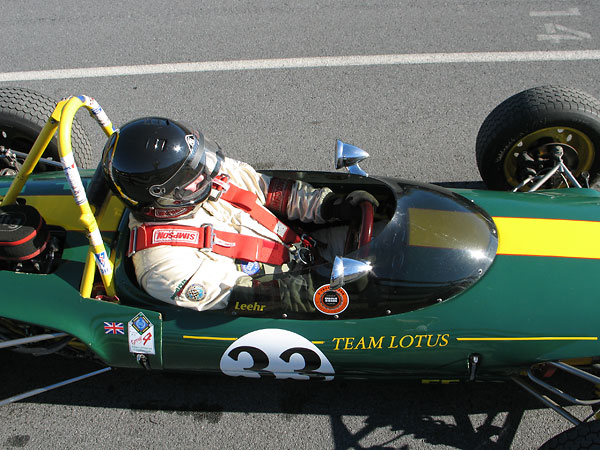
�
Normally the Lotus 51's molded Perspex windscreen would wrap around all the way back to the firewall.
�
Unless modified, as shown here, these cars only suit narrow shouldered drivers.
�
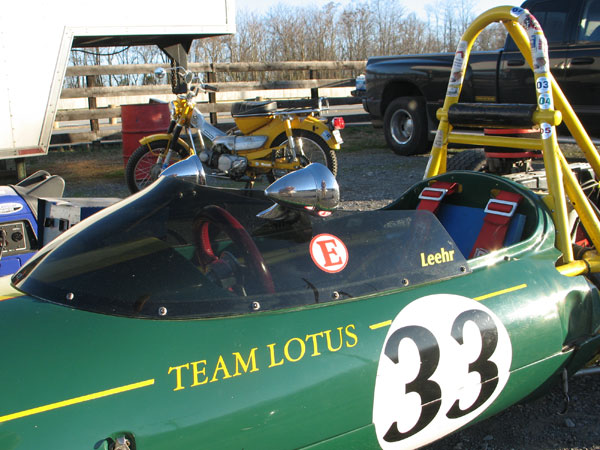
�
A nice design feature of the windscreen is the way it kicks up at the lip (near the steering wheel).
�
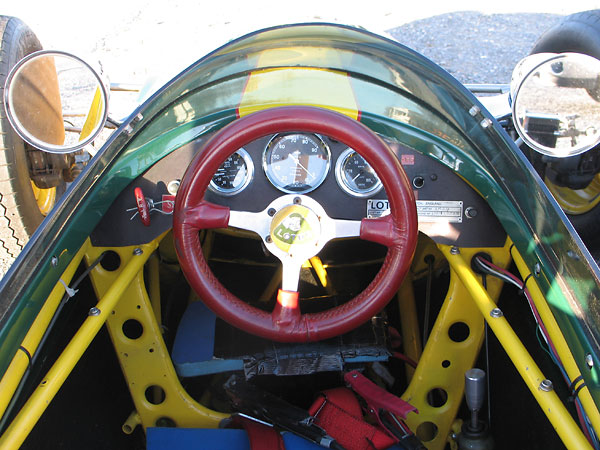
�
The "perforated hoop" cowl bulkhead is a distinctive Lotus design feature shared with earlier racecar models
�
back to the Lotus 18 (1960). The Lotus 61 had a perforated hoop too, with flat top for the new "wedge" body.
�
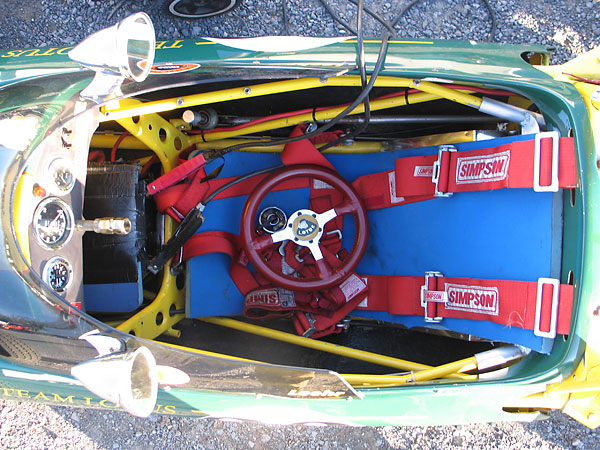
�
The Lotus 51 originally came with a molded fiberglass seat. Dick Leehr uses a "Backsaver" pad instead.
�
None of the small diameter diagonal braces (upper or lower) that appear in this photo were included in
�
the earlier 51a or 51b variants. The 51c was a demonstrably stronger and stiffer frame design.
�
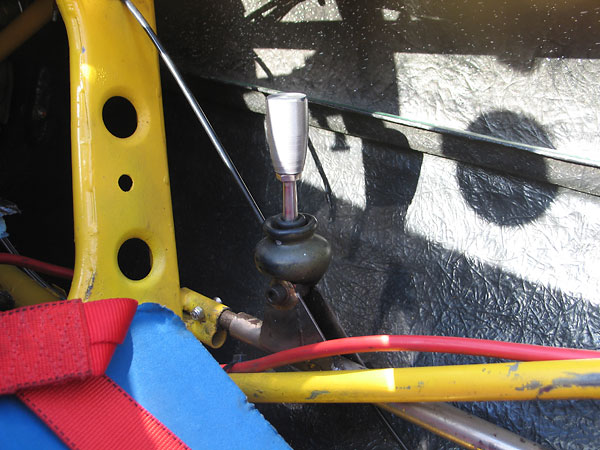
�
Lotus 51c (Hewland) simple gear shifter mechanism.
�
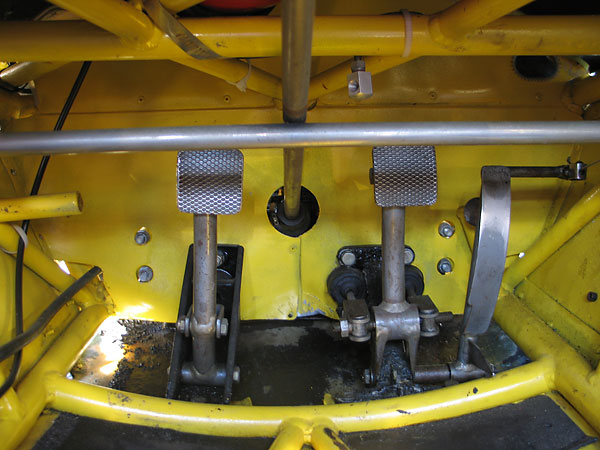
�
Most formula cars have full aluminum floor pans. The Lotus 51 has some steel straps...
�
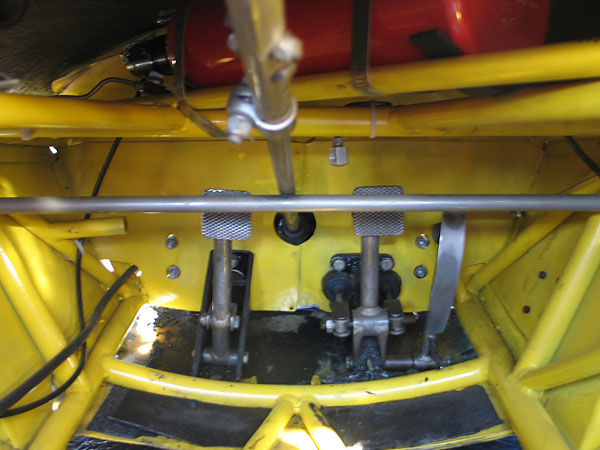
�
A FireBottle (2.5lb Halon) fire suppression system has been installed, with its bottle strapped to a
�
diagonal frame brace. This brace didn't exist on the 51a or 51b, but it did on the 51c and 61 models.
�
�
Exterior
��
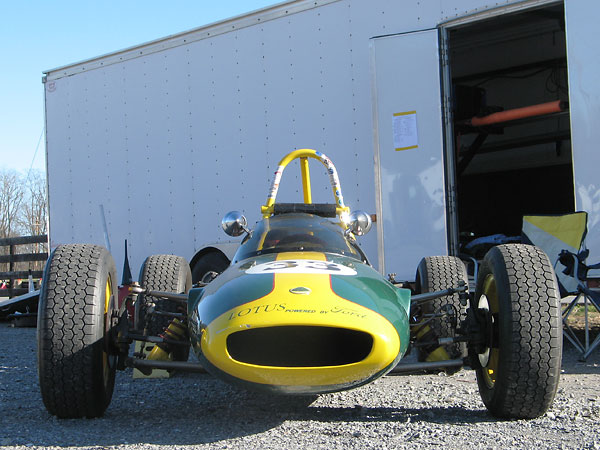
�
"Lotus Powered by Ford" - From the early sixties, Lotus Cars Ltd. and Ford Motor Company worked in
�
close cooperation on many projects. For example, Lotus used Ford engines in the Lotus Elan sports car
�
from 1962. Ford contracted Lotus to assemble a sporty version of the Cortina saloon (i.e. "Lotus Cortina")
�
from 1963. Among Formula Ford constructors, Lotus had the closest and longest standing ties to Ford.
�
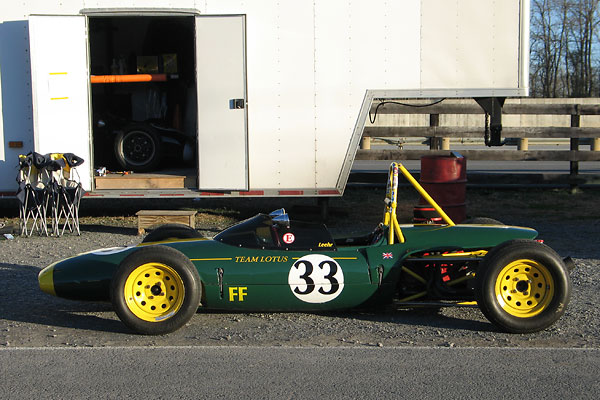
�
The "cigar shape" of the Lotus 51a and 51b was replaced with wedge styling for the Lotus 61 model.
�
The 51c was a transition model, with early styling combined with some of the later technical features.
�
Apparently some American customers preferred the cigar shape: Lotus kept making the 51c for export
�
many months after the 61 was introduced. Most European customers wanted the new style right away.
�
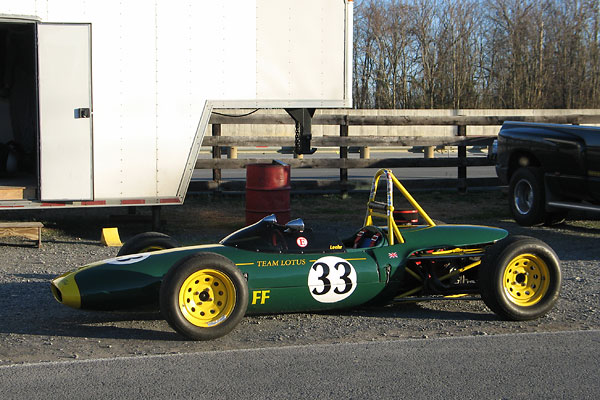
�
Spotter's guide: the Lotus 61 body had a chisel nose with radiator airflow exiting at the suspension.
�
With the body removed, a 61 would look remarkably like a 51c. There are technical upgrades such as how
�
the steering rack is mounted; on a 61 it can easily be raised or lowered to tune out bump steer. The next
�
Lotus Formula Ford after that was the 69. Look for radiator airflow exiting on top, before the front bulkhead.
�
Rather pricey in their day, only four Lotus 69 Formula Fords were exported to North America.
�
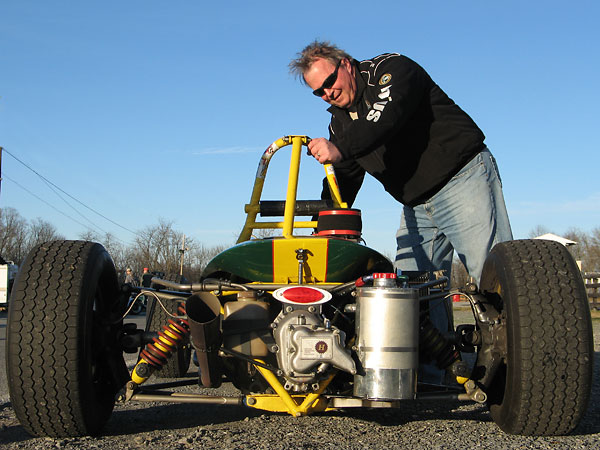
�
Dick Leehr has enjoyed racing his Lotus 51c for ten years. He also owns and races a lovely Lotus 41.
�
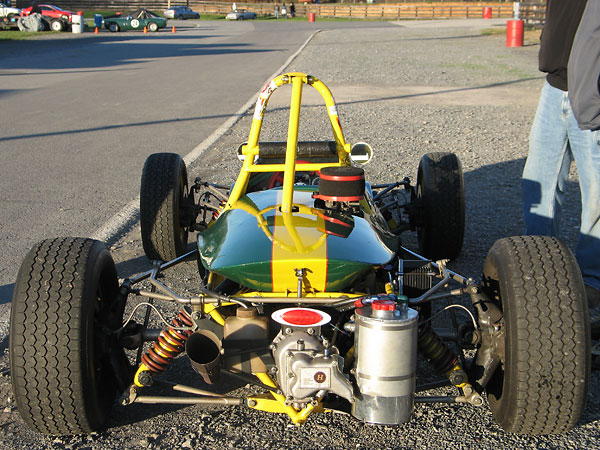
�
To continue racing, at some point, a taller and more strongly braced rollhoop has been installed.
�
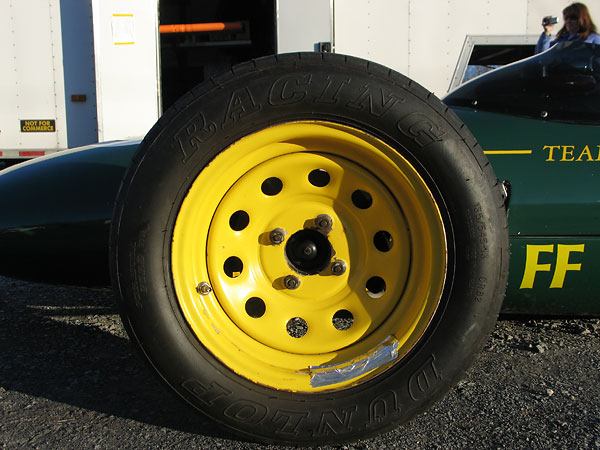
�
Diamond Racing Wheels 13x5.5 steel wheels. Dunlop Racing CR82 tires (135x545x13 front / 165x580x13 rear).
�
�
All photos shown here are from November 2009 when we viewed the car at the VRG's Turkey Bowl�
at Summit Point Motorsports Park, West Virginia. Photos by Curtis Jacobson for BritishRaceCar.com, �
copyright 2010. All rights reserved.
�
| If you liked this article, you'll probably also enjoy these: | �|||||
 | �
Marcus Jones '60 Lotus 18 Junior | �
 | �
Bob Romanansky '69 Macon MR7 | �
 | �
Kyle Kaulback '70 Lotus 61MX | �
| You're invited to discuss anything you've seen here on The British Racecar Motorsports Forum! | �|||||
�
Notice: all the articles and almost all the photos on BritishRacecar.com are by Curtis Jacobson.
�
(Photos that aren't by Curtis are explicitly credited.) Reproduction without prior written permission is prohibited.
�
Contact us to purchase images or reproduction permission. Higher resolution images are optionally available.
�

 �
�